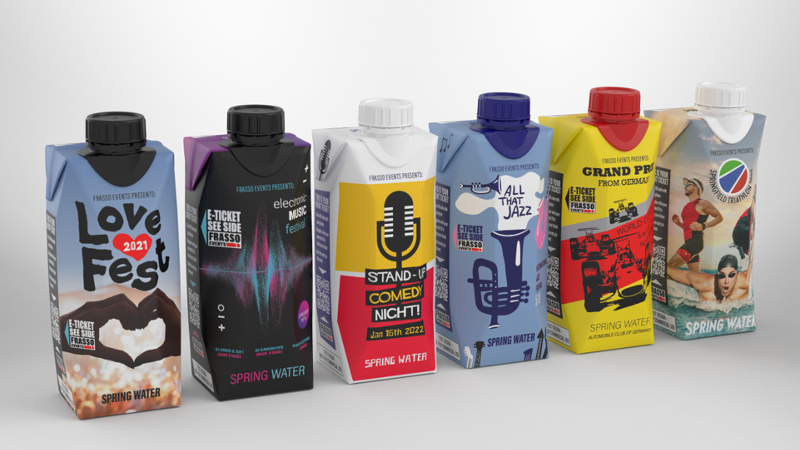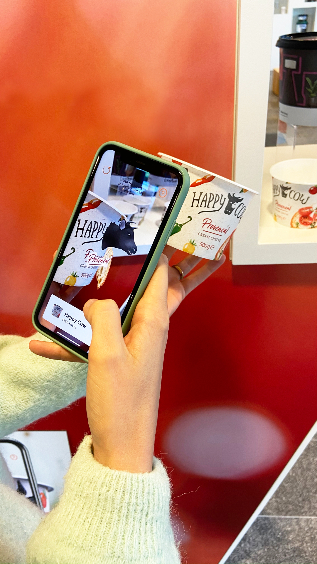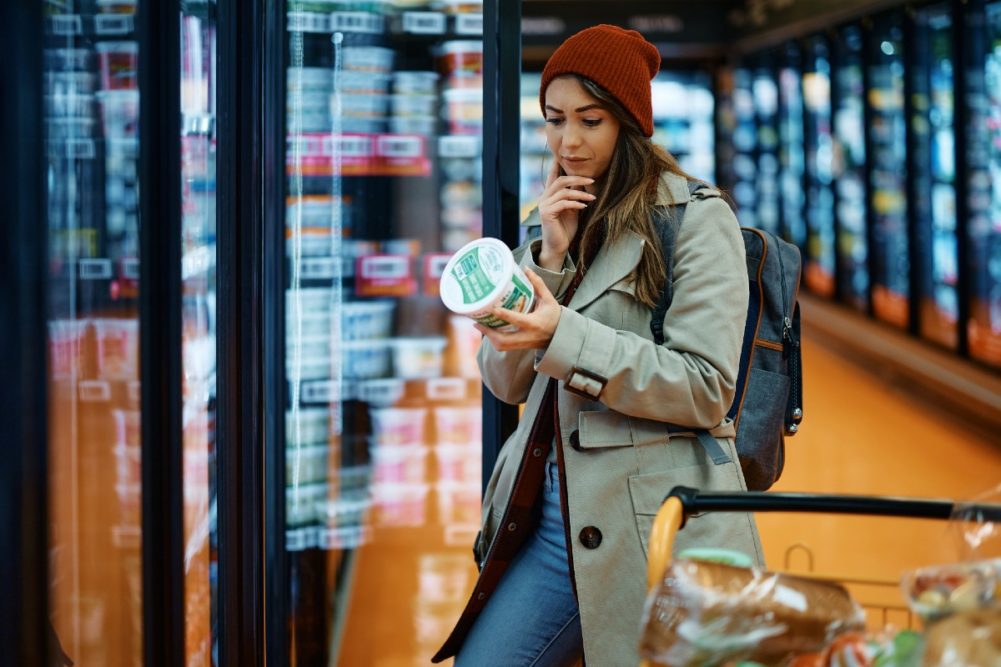In the past, neither dairy companies nor consumers expected labeling to offer varied communication, but that’s all starting to change as brands offer an increasingly wide variety of products and search for creative and efficient ways to tell their stories and engage consumers.
At the same time, continually advancing the sustainability of labeling and packaging materials is at the forefront for the industry. Ensuring labels advance recyclability, stand out on the shelf and provide opportunities to engage consumers are only some of the details dairy companies keep in mind when creating labels.
Eyeing customization
Tetra Pak is rolling out its custom printing business with the goal of allowing dairy brands to engage consumers in a new way through labeling. As the dairy industry continues to expand the number of products it offers, a more flexible approach to labeling has become essential, said Pedro Goncalves, vice president of marketing.
“We are seeing much more diversification, and we are seeing a need for better quality printing,” Goncalves said. “The package can be the next big thing in terms of promotion, and it can increase a lot of return on investment for promotion.”
Dairy companies have an impactful story to tell, and there simply isn’t enough room to tell it all on-pack. Additionally, consumers rarely go to brand websites, and expensive social media marketing lacks return on investment, limiting the effectiveness of other storytelling methods. Alternatively, customized labels that tell different pieces of a company’s story from one product to the next offer an opportunity to reach consumers in a more meaningful way, Goncalves said.
These considerations led Tetra Pak to launch its custom printing business. The technology allows dairy companies to not only deliver unique QR codes and aspects of their story from product to product, but also to engage in various promotions, contests and partnerships with other companies.
 Photo: Tetra Pak
Photo: Tetra Pak“Custom printing can open so many ways to engage consumers, to acquire consumers, to increase purchase frequency, to tell the stories of the brands,” Goncalves said.
Being able to tailor communications to different consumer groups is also essential.
“If you run more SKUs to have more diversified production, you are going to need a more flexible system,” Goncalves said.
While the concept of digital printing isn’t necessarily new, he said most existing printers run at a speed of 300 feet per minute. Tetra Pak’s technology has been developed to run at 700 feet per minute and offer a resolution of 1200 pixels by 600 pixels.
Still, many dairy processors have yet to see how they can effectively vary messaging on products, which Goncalves said is a missed opportunity.
“It’s not only the variations, but the power to tell the story on the package that becomes something really interesting,” Goncalves said. “Labeling on the packaging can drive a lot more loyalty and desire to buy and consume the product and assure the consumers they are making the right choice.”
Room for creativity
Overall, dairy products are produced in challenging environments that can limit options for labeling, but digital technology is improving, and new substrates are being tried out of necessity from the raw material shortages the industry has faced, as well as sustainability mandates, said Leslie Williams, vice president of business development, Source Wurx.
“There are ways to differentiate on shelf. However, customization can generate increased costs that require evaluation and trialing in each unique production environment,” Williams said. “Digital technology brings the opportunity for limited-time offers, brand collaboration and special designs. You can easily promote your brand’s anniversary year or create a label with a seasonal theme without adding the cost of printing plates for an item that will not be repeated.”
In terms of recycling, Williams said there are innovative upcycled materials coming for butter products, and the company is currently trialing them for viability. They are also trialing APR-approved film labels for HDPE milk containers.
Maintaining color quality on labels is another consideration.
“Color management from run to run, as well as management across all packaging types, is critical to ensure brand equity,” Williams said. “Source Wurx manages all different print technologies across all substrates, we dial in the color in the graphic development stage and manage the proofing process to ensure consistency. We have long-standing relationships with our printers and through on-site press approvals and sampling procedures. If there is a color question, we hear about it on the front end. We also make sure to put eyes on all press run samples and compare across all the different types of packaging in our client’s portfolio for verification.”
 Photo: MCC Verstraete
Photo: MCC VerstraeteNext-generation IML labeling
MCC Verstraete’s specialty is in-mold labeling (IML). The company sees it as a growing technology as the dairy industry becomes more familiar with the option, said Mathieu Nieuwenhuyse, general manager for the Americas region. The company’s technology continues to expand with improved barrier capabilities, incorporating metallic and spot varnish into artwork, and using invisible blue inks for detection purposes on the packaging.
In addition to IML, the company is advancing its SealPPeal technology that uses polypropylene lidding to replace aluminum and supports recycling through mono materials, Nieuwenhuyse said. An innovation called NextCycle IML is another one of the company’s efforts to boost the recyclability of packaging.
“NextCycle IML makes it easier in a mechanical recycling stream to actually recycle the packaging to new food-grade packaging,” Nieuwenhuyse said. “This is an important enabler that gives us a strong belief that NextCycle will be the IML of the future.”
When the NextCycle IML labels are combined with the company’s SealPPeal die-cut lidding and digital watermarks, it becomes the company’s most sustainable packaging offerings to date. The NextCycle IML technology was reverse-engineered by looking at the mechanical sorting streams in the European market. The labels release from the packaging in a mechanical sorting process, leaving behind a pure polypropylene residue.
The company also introduced Molded Fiber Labeling to decorate molded fiber packaging, an offering that fits its goal of promoting mono-material packaging.
IML labeling also helps alleviate some of the labor issues the industry has been facing as it uses robotics, Nieuwenhuyse said.
“What we have seen in the US dairy market more and more is customization and more premium images as a focus point for brands,” Nieuwenhuyse said. “Brands really want to stand out on the shelf. They want to convince the consumer their product has a lot to offer, and that is reflected in the packaging and labeling technology they use.”
Tracing products back to the farm
Consumers are demanding an increasing amount of information about the foods they purchase, but space on packaging is limited. As a result, dairy processors are using QR codes, website links and apps to provide more information, including specific ingredients, how they are produced and sourced, recycling information, and company details, said Roberta Wagner, senior vice president of regulatory and scientific affairs, the International Dairy Foods Association (IDFA), Washington, DC.
While consumers desire to know the source of their food, the dairy industry faces challenges in providing farm-level traceability because milk is comingled before it arrives at plants and is used to make a variety of products, Wagner said. These practices provide supply chain efficiencies and reduce transportation costs, but Wagner said as a result much of the industry is prevented from providing back-to-the-farm traceability.
Despite this, processors can indicate the region where the milk is sourced, Wagner said. The industry is working to be able to provide those details to consumers, but it will require continued investment.
“To provide region-to-store traceability to consumers would require the dairy industry to embrace technological advancements to digitize their supply chains, manage data flow, and to provide consumers with access to the information,” Wagner said.

